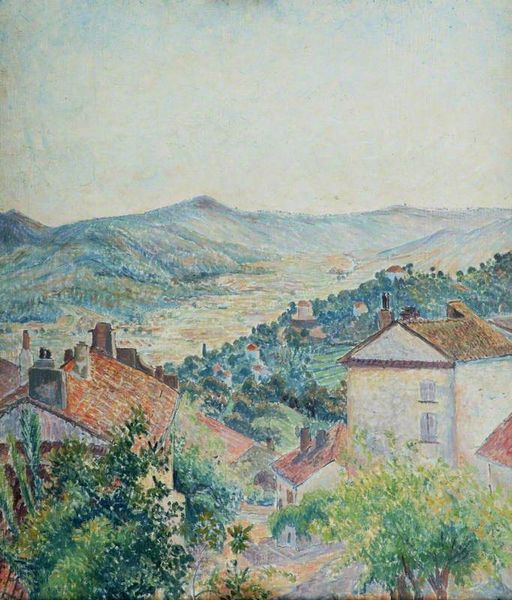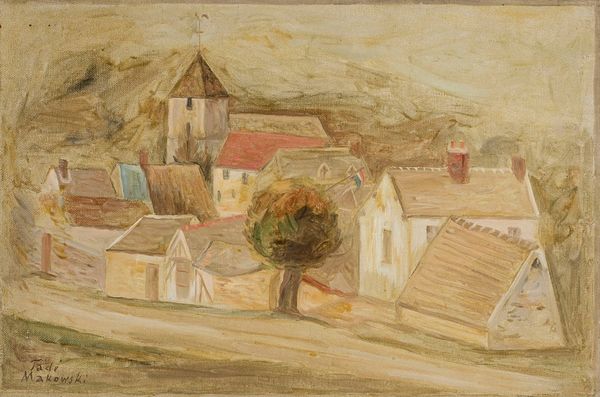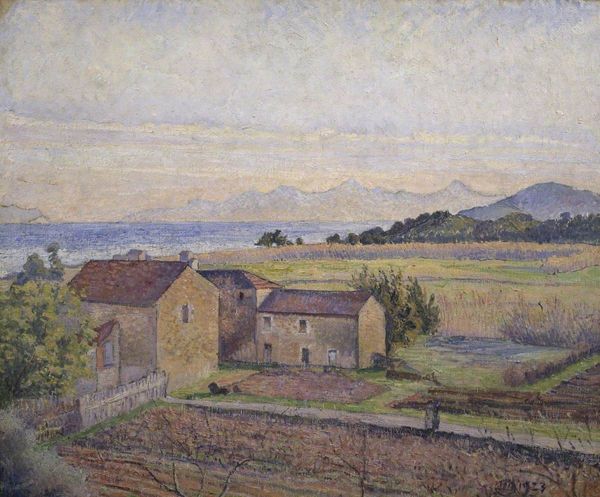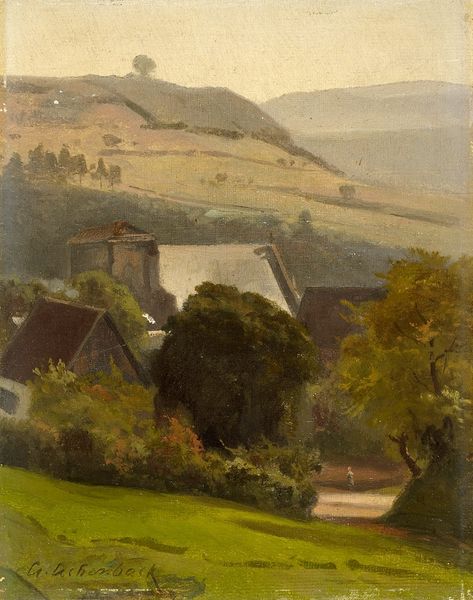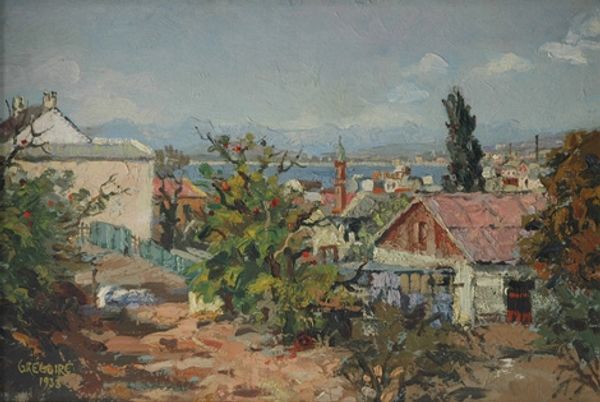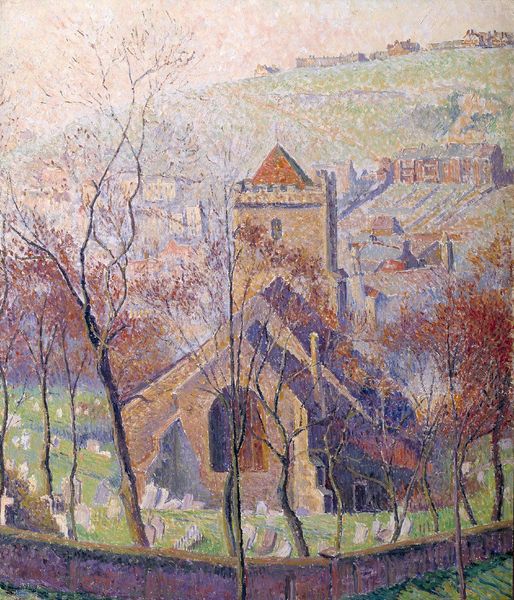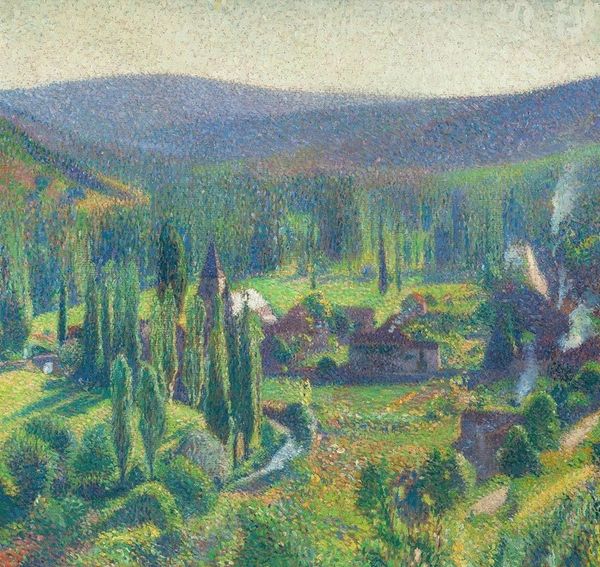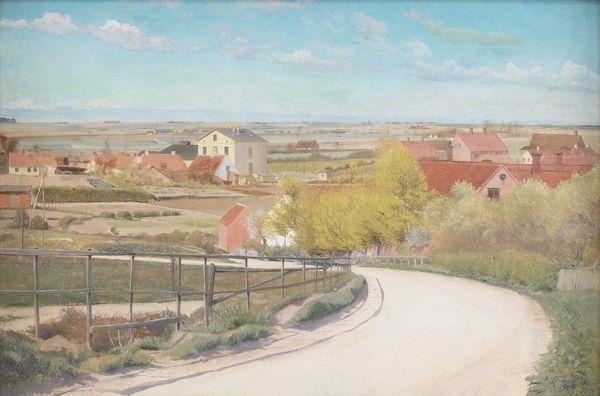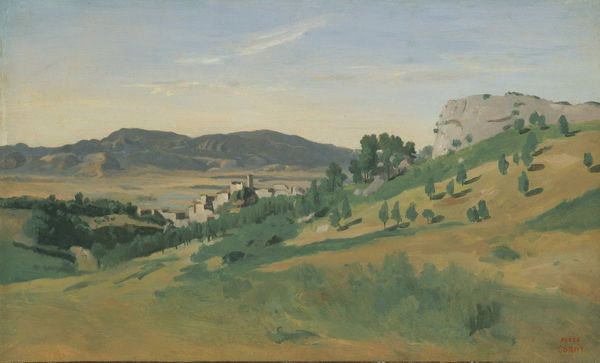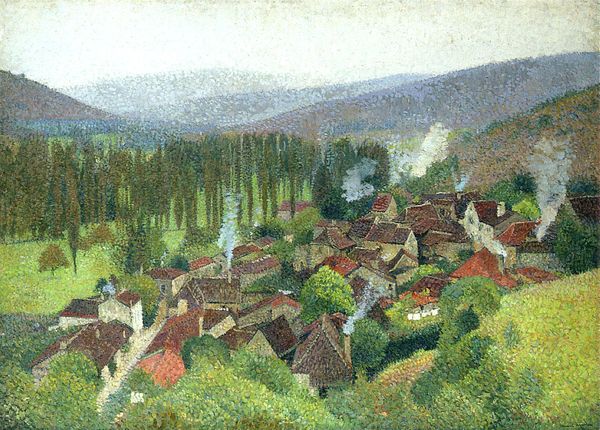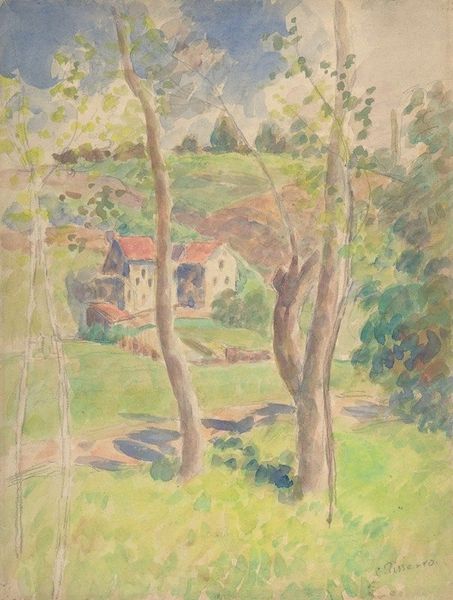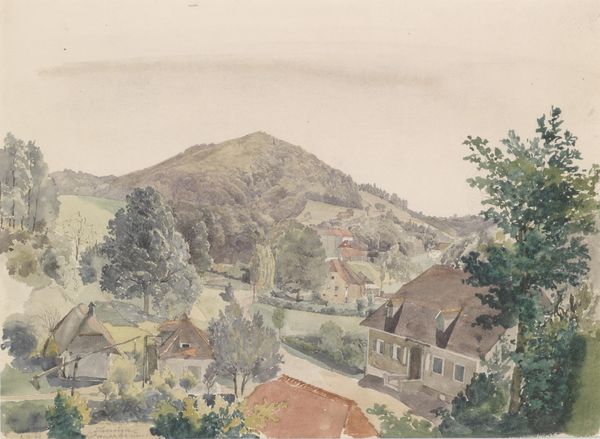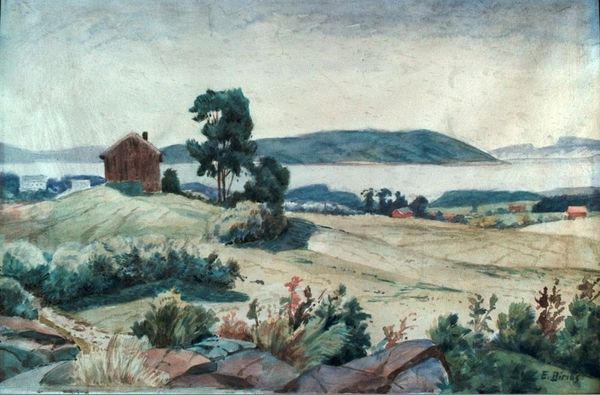
Copyright: Public domain
Curator: Standing before us is "Le Mistral, Le Brusq," a 1925 landscape painted by Lucien Pissarro. You can really feel the Provençal light, can't you? Editor: Yes, there's something about the almost monochromatic scheme that makes it appear faded, like an old photograph, which contrasts with the tumultuous sea. Despite being rendered in oils, it feels like a delicate watercolor. Curator: It does have that airy quality. Pissarro, deeply committed to plein-air painting, likely worked on this piece on-site, capturing the ephemeral dance of light and shadow as best as he could. Notice how the rooftops, almost identical in shade to the barren land, draw one’s gaze to the distant coastline. I think it's very serene. Editor: For me, the serene veneer is undermined by the social implications. Landscapes are rarely just landscapes; they're often reflections of power, ownership, and the romanticizing—or erasure—of labor. Whose land are we actually seeing here? And who profits from it? Curator: Well, certainly the buildings indicate a settled area, probably owned by those living there. It's not overtly political; instead, I think the lack of strong color almost suggests the passage of time. Editor: Time indeed. The year it was painted coincides with some intense anti-colonial movements in French territories. While I understand your impression, its seemingly detached representation could, for me, reinforce the aestheticization of space while overlooking deeper complexities. But what intrigues me more are the painting’s hazy color and light—in relation to the history of impressionism. Curator: True, the light is really at the forefront! Do you think there is something we can extract from the light? Editor: In France, during the 1920’s, “light” became intrinsically linked to modernization through urbanism and architectural theory. Although I understand your reading of its more superficial properties, it’s possible the hazy light, could symbolize industrial growth or national expansion… Curator: Hmm, the point of it as something more superficial really does capture it though! The subdued color creates a calming and contemplative effect... It's just lovely. Editor: Indeed, on second thought, perhaps there is a calming sentiment associated with its subdued coloring—a visual whisper of change that could make us rethink our perceptions today. Thank you, Pissarro, for the continued inspiration.
Comments
No comments
Be the first to comment and join the conversation on the ultimate creative platform.
